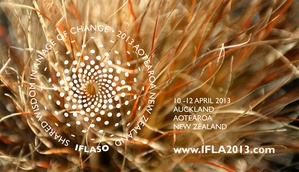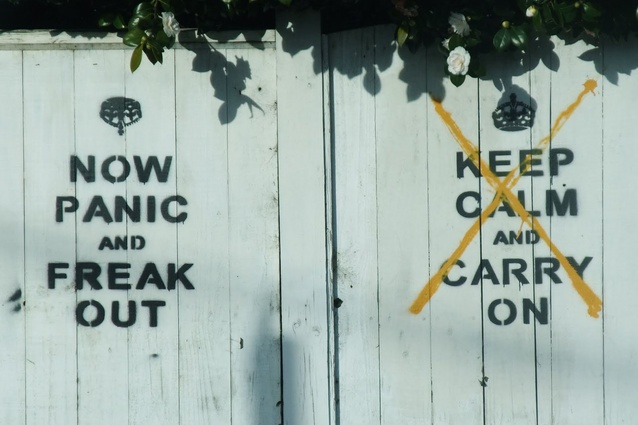IFLA50: Keynote speaker preview
Two keynote speakers attending next year’s 50th International Federation of Landscape Architects World Congress (IFLA50) answer some questions about resilient cities and communities.
The 50th IFLA World Congress will focus on knowledge sharing around the increasingly challenging issues facing local and global environments in an age of considerable and frequently dramatic change. An inspiring array of international and local speakers will explore the congress theme and sub-themes, which include ‘resilient cities and communities’. As a precursor to the congress, two keynote speakers, Paula Villagra of Chile and Jacky Bowring of New Zealand, were asked to reflect, in advance, on resilience.
From a landscape perspective, what factors are important for developing resilient cities and communities?
Paula Villagra: Landscape diversity and aesthetics can contribute to earthquake recovery: landscape diversity provides multiple uses post-earthquake and accommodates a variety of public needs. If diverse landscapes are also well distributed on the land they provide better accessibility for a wider community. Landscape aesthetics is also important to consider for increasing a community’s cultural and emotional resilience. The aesthetic of landscapes can be influenced by the quality of design in urban environments, because it can vary the extent people find the landscape as useful, safe and familiar.
Jacky Bowring: Memory and flexibility are seemingly contradictory but necessarily coexisting components for resilience. Memory has a number of roles, reminding us where we have come from, contributing to identity so that we can be resilient as a community, and acting as a warning so that the same mistakes are not repeated. So much of memory is rooted in the landscape, so our profession has a significant responsibility to make places for reflection, to remember losses and honour survivors: retrospective and prospective places. And we need to work with the landscape’s own memories, the evidence in the landscape that says ‘proceed with caution here’. This is the slow landscape.
At the same time as we remember, we need to be constantly flexible. Responsiveness to constantly changing cultural and biophysical conditions needs clever and often quick responses. This must be in the context of a conviction about how to act, how to design, how to deal with whatever arises. These are often the spontaneous, temporary, places in flux. Flexibility is critical for the fast landscape. This is reflected in factors such as modularity that allows for parts of a city or system to fail, but the rest of it can remain functioning and able to support the residents.
Paula, what have you discovered as a result of investigations after the Chilean earthquakes two years ago, and since then?
PV: We have been able to find significant differences in respect to how the urban landscape has been used over time for earthquake recovery. For example, we compared the 1960 (9.5 M earthquake) scenario of Valdivia with a similar scenario in 2010. Such a change in the utility and perception of the open space after an earthquake was found to occur due to changes in the landscape heterogeneity, urban design quality and people’s experience of past earthquakes.
Jacky, what have you discovered as a result of investigations after the Christchurch earthquakes?
JB: A huge amount of information has been amassed following the earthquakes. Some of this is information which has surfaced – literally – from the past. It is things that were already known, yet forgotten, overlooked, lost in the processes of development. As we grapple with the complexities of ‘new’ zones – red, green, white, TC3, and so on – we are also in a complex emotional relationship with the city. The very things which had contributed to the city’s character became sources of fear and frustration. Topophilia, or the love of place, is an expression of attachment and belonging. In Canterbury, this was invested in a range of natural and cultural factors, from the wide plains, hills, rivers, and heritage architecture. After the quakes these elements metamorphosed, and fear of landscape – topophobia – was widespread. Rocks rolling from the hills, liquefaction and polluted waterways, fissures ripping across the plains, and collapsing buildings undermined a landscape that was formerly a place of comfort – Home. But even when this geological Tourette’s syndrome persisted with its wild and profane outbursts, there was still a love for this place. Care, optimism, belief and an amazing outpouring of emotion, were some of the most startling ‘gifts’ from the disaster. Of course, there is also a huge and persisting mantle of negative emotions too, frustrations with systems, anger over seamlessly needless destruction of heritage buildings, annoyance that things are happening too fast, or too slow. But the city’s identity is changing, and so much of this change comes out of people thinking about, designing, getting involved, and debating the landscape.
What are earthquakes’ implications for landscape architecture?
PV: Landscape architects can mix aesthetics and functions and, as well, are able to design with change and earthquakes change our urban environments from physical, scenic as well as from perceptual perspectives. The role of landscape architects for the recovery of cities prone to earthquake is to assure that the planning and design of cities can accommodate such a dramatic change contributing to disaster-recovery planning.
JB: Assuming something won’t happen, or won’t happen again, is not a sound basis for intervening in the landscape, and this has massive implications for landscape architecture. The ripples that the earthquakes have caused across the country have widespread ramifications for the built and natural landscape. Sudden close scrutiny of building codes challenges the very fabric of the country’s urban landscape. The underlying landscape’s assertion of its seismicity – its propensity for shaking, sinking and liquefying – has been a revelation for how we conceive of inhabiting this place. The central focus on landscape is a very exciting time for landscape architecture – while not repeating the mistakes of the past, we have the opportunity to craft something that is going to be a source of identity, safety, and enjoyment for future generations. We have to negotiate this carefully – economics and emotions are a volatile mix in the city as it moves into the rebuild phase.
Jacky, what cultural factors, in your view, influence the landscapes of New Zealand? Does this lead to landscape outcomes which result in a specific character?
JB: Culture is prismatic and constantly changing. The landscape is the place in which this change is amplified, as nothing is more distinctive than a culture’s expression of their values and beliefs in the landscape. Cemeteries and memorials, for example, are often dramatically different in cultures that are unfamiliar, and can be challenging. Ideas of beauty are also culturally variable, and are reflected in landscapes which might be appealing or disturbing, depending on cultural context. Aotearoa New Zealand is influenced by all of the cultures which make this place their home. A fusion landscape is rich and varied, and a source of constant stimulation. We have to avoid being naïve and superficial about cultural expressions. A sophisticated, subtle and intelligent response to cultural context can result in a character which is specific to Aotearoa New Zealand. Drawing on our underlying physical landscape and reflecting the fluxes and inflections of cultures’ tracings, means this can be a place like no other.
Dr Paula Villagra is an architect and landscape architect from Chile with a Ph.D from the University of Melbourne in Australia. She is a Research Fellow at the Institute of Environmental Science and Evolution, Faculty of Science, Southern University of Chile. Her work includes both practice and research. She is interested in the design of open spaces which contribute to conserve natural ecosystems as well as to provide environmental education for people. With this in mind, she has designed plazas, parks and botanical gardens in Chile. Her research area falls within the discipline of landscape perception, focused on exploring the relationship between people and landscape change due to the effects of disturbances. This is explored in both, the natural and the built environment in order to inform landscape management and design as well as urban and regional planning. Within this area of research, Paula has undertaken studies in landscapes subjected to controlled burnings and earthquakes, in woodland, wetlands and urban environments and in botanical gardens. Paula has presented her work in different conferences (IFLA, EDRA and IUFRO, among others) and published in international journals such as the Journal of Environmental Psychology and Landscape Research. In 2011 she received a grant from the National Commission for Scientific and Technological Research of Chile (CONICYT) to study communities’ perception of landscapes that contribute to urban resilience and earthquake recovery in the cities of Concepción and Valdivia in Chile (FONDECYT N. 11110297). Paula is also the Chilean delegate of IFLA and the Chair of the Communication Committee of IFLA.
Dr Jacky Bowring is Associate Professor and Head of the School of Landscape Architecture at Lincoln University, Christchurch, New Zealand. Her key areas of interest are design critique, design theory and landscapes of memory. She has published widely in international academic and professional journals, and is the author of A Field Guide to Melancholy (2008) and editor of Landscape Review. Jacky is a registered landscape architect, and has had success in a number of national and international design competitions, including as a member of the winning team, NZ Wood, for last year’s 48 Hour Design Challenge for the Christchurch post-quake rebuild.

The 50th International Federation of Landscape Architects World Congress, being held in Auckland between 10-12 April, 2013. More information here.










